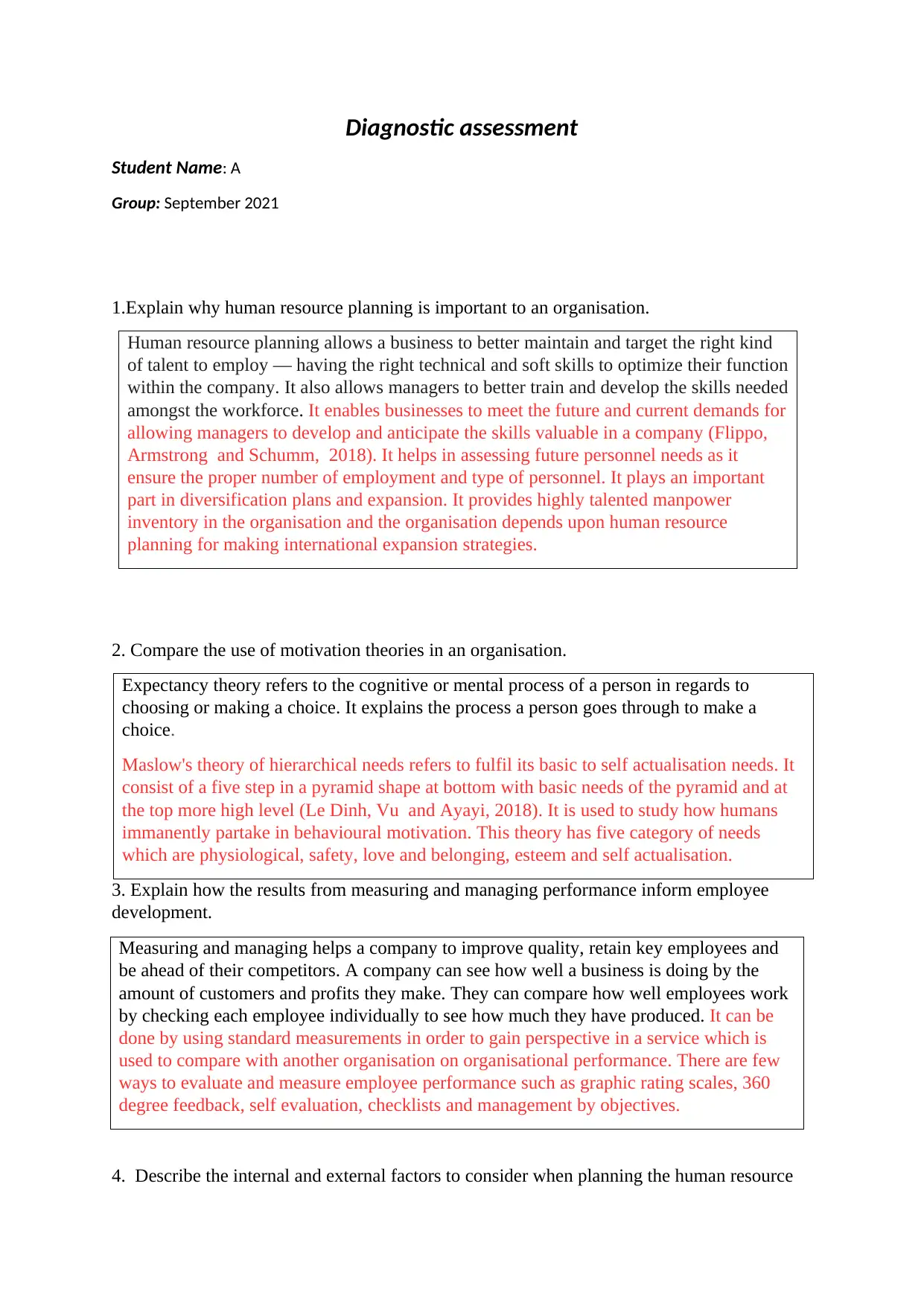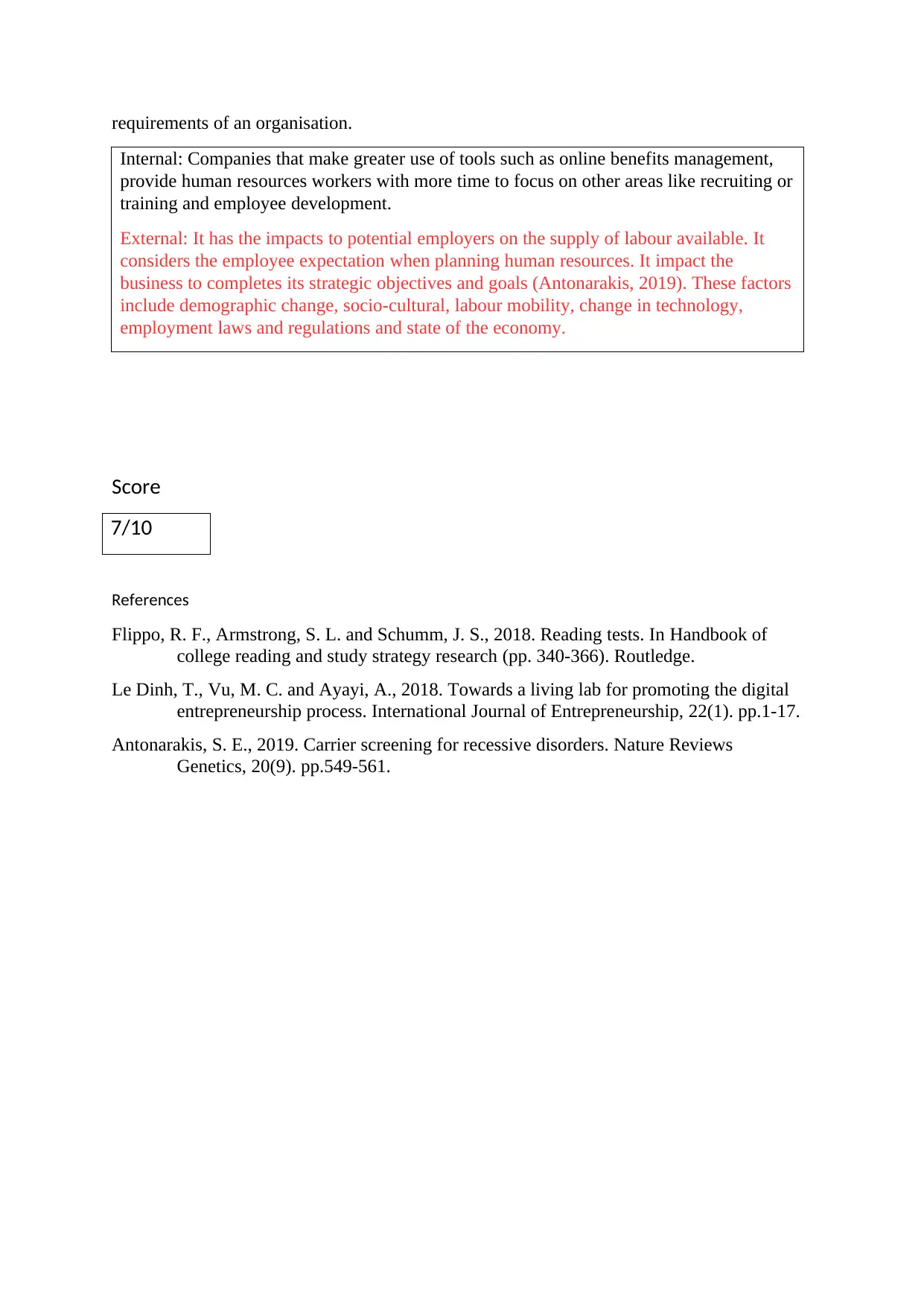Diagnostic Assessment: HR Planning, Motivation, Employee Development
VerifiedAdded on 2023/06/11
|2
|649
|277
Homework Assignment
AI Summary
This assignment provides a diagnostic assessment of human resource planning within organizations. It explains the importance of human resource planning in talent management, training, and meeting future demands. The assignment compares motivation theories, such as expectancy theory and Maslow's hierarchy of needs, and their application in understanding behavioral motivation. Furthermore, it discusses how measuring and managing performance informs employee development through methods like graphic rating scales and 360-degree feedback. Finally, it describes the internal and external factors that influence human resource requirements, including technological advancements, employee expectations, and economic conditions. The assignment concludes with a score of 7/10 and a list of references.
1 out of 2








![[object Object]](/_next/static/media/star-bottom.7253800d.svg)